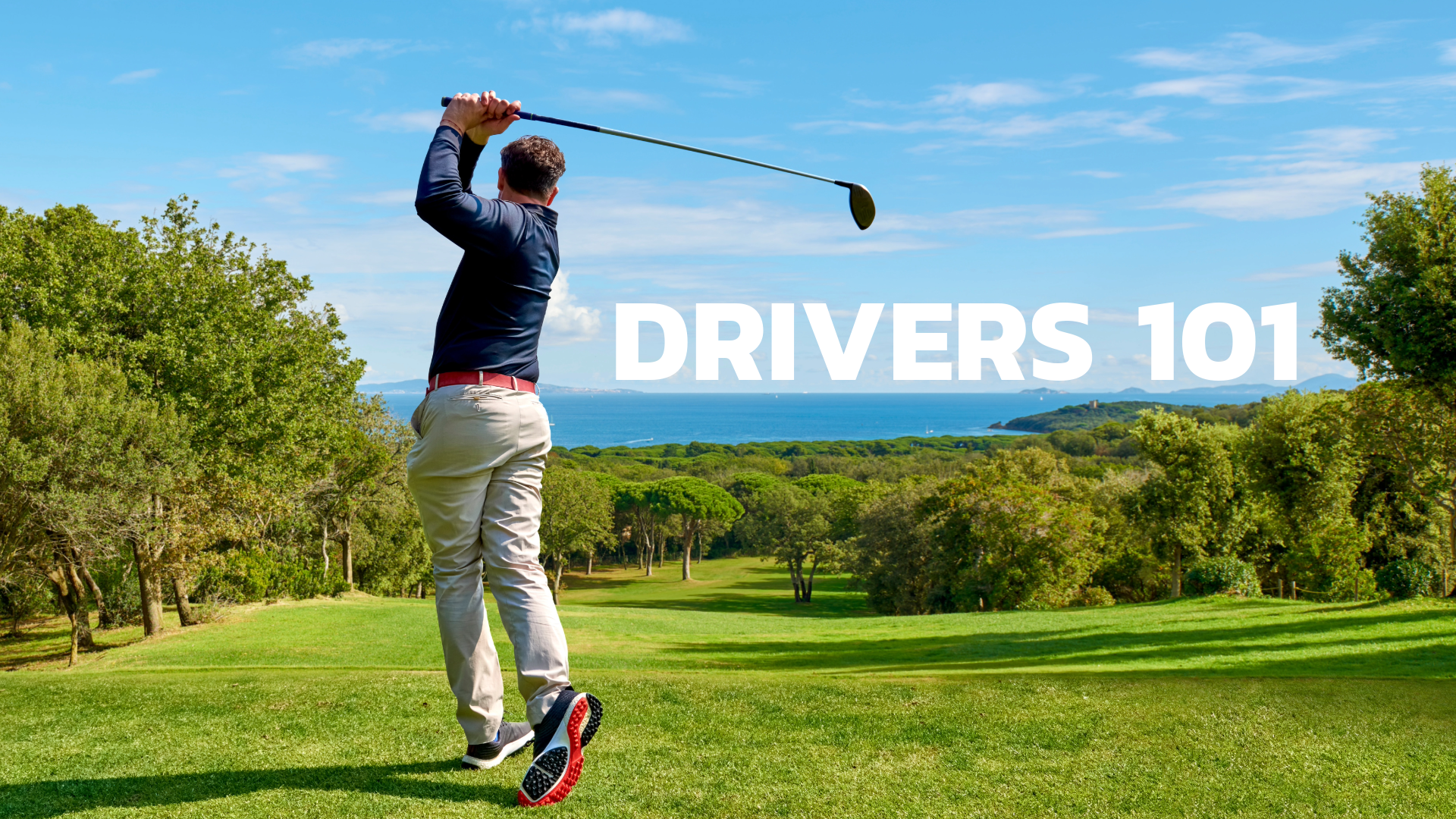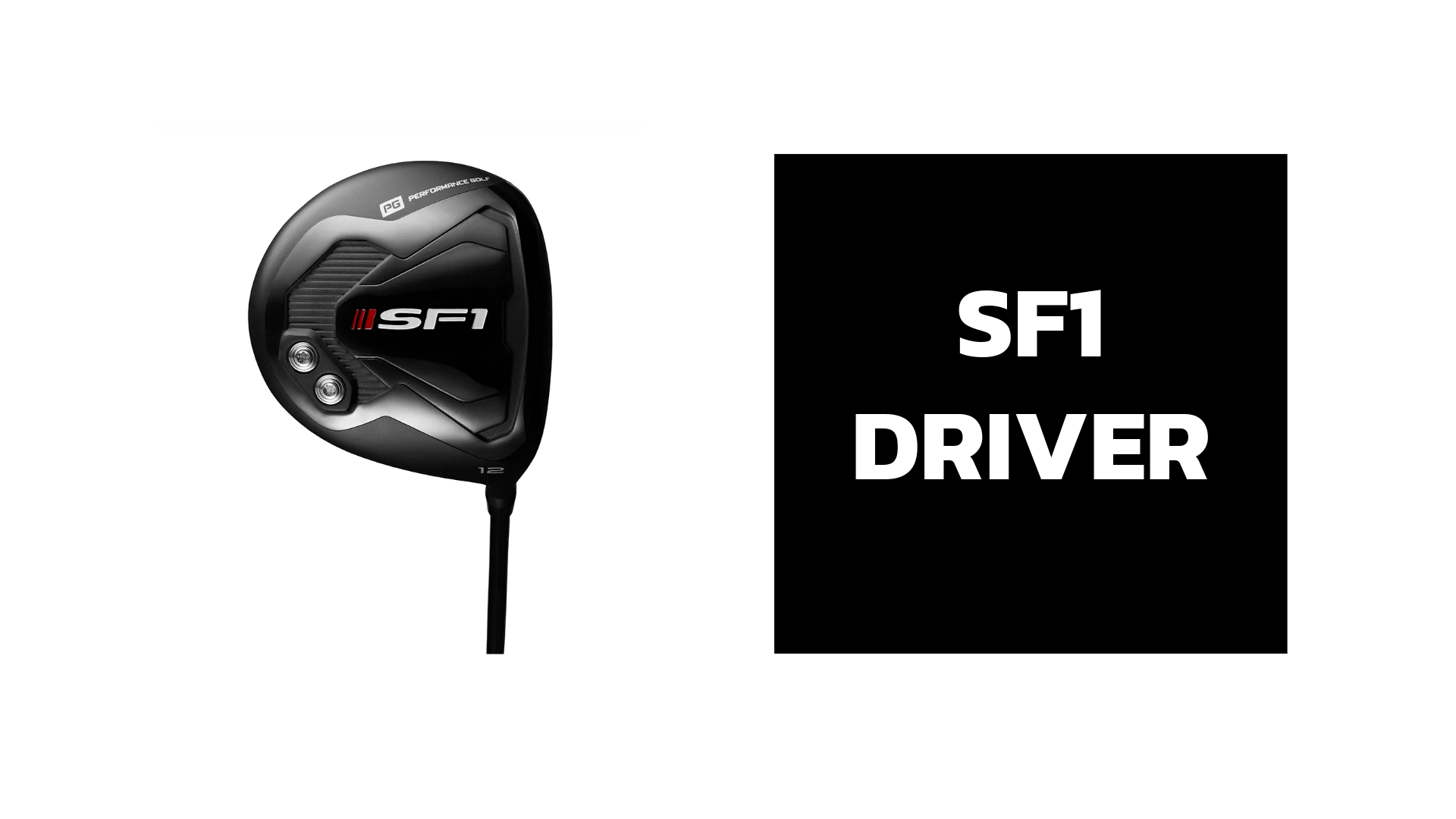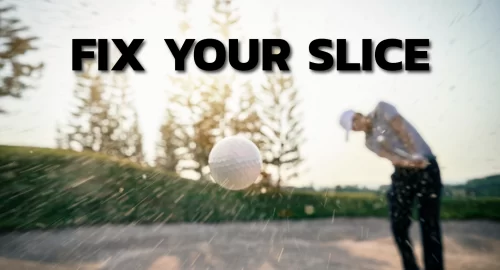
Imagine walking up to the tee box knowing that your longest club in the bag is an absolute weapon. Because you’ve hand-selected your clubs, you have the confidence to hit a long, straight bomb down the fairway and leave yourself a great approach shot.
So how do you achieve this? Step one is choosing the right driver.
To improve your tee box performance, you need to use the best drivers for your swing and skill level. Otherwise, you’re making golf a lot harder for yourself.
Let’s talk about all the different types of drivers out there, so you can determine which will work best for your level and playstyle.
The Best Driver to Improve Your Tee Box Performance
If you want to hit your golf goals this year, you need to prioritize your driving. While hitting irons solid and a good short game is key, your driver is used 10-14x per round and sets up your shots.
The problem is that most golfers are terrified of their driver and choose a 3-wood instead. But to be honest, this will leave you with much longer approach shots, which leads to higher scoring averages.
The sooner you can make your driver a weapon in your golf arsenal, the sooner you can reach your peak golf potential.
“What other people may find in poetry or art museums, I find in the flight of a good drive.” – Arnold Palmer
Adjustable Golf Drivers
The first type of driver is known as an adjustable driver. These clubs are between 430-460 cc, with 9–11 degrees of loft.
As the name suggests, these clubs are adjustable, so you can change the loft and lie settings. For example, you can turn a 9-degree driver into 8 degrees or crank it up to 11. You can also adjust the lie angle, which impacts the face angle and increases your ability to hit more draws or fades.
Some adjustable drivers also have a sliding weight track for even more customization to alter ball flight and trajectory. These are the most commonly used types of drivers for the majority of golfers due to their versatility.
High Launch Drivers
A specialized type of adjustable driver is known as a high-launch (HL) driver. These have all the same features as a normal adjustable driver but have additional loft; typically 12-13 degrees.
These clubs are better suited for higher handicaps, slower swingers, and seniors who can’t produce as much clubhead speed. Extra loft makes it easier to get the ball airborne, and increase total driving distance.
Low Spin Drivers
In contrast to high-launch drivers, there are also low-spin (LS) drivers. These clubs are geared toward more advanced golfers who tend to have faster swing speeds.
While most golfers want to spin around the greens, too much backspin with a driver kills distance and accuracy. The faster you swing the club, the more spin you produce, so often in this scenario, you need a club to offset this spin.
This is why the best amateurs and professional golfers use low-spin drivers. The design of the club and position of the weights will minimize spin to maximize total distance.
Anti-Slice Drivers (Draw Bias Drivers)
Another common driver type is known as anti-slice drivers – commonly referred to as draw bias drivers. These drivers are meant to help with the most common swing issue in golf – the slice.
If you’re someone that’s always hitting right and can’t seem to fix the issue, this specialized type of driver can help. They feature a unique design either with an offset hosel, sliding weight tracks, counterbalance shafts, or a combination of these to help square the face at impact.
SF1 Driver
One of the best drivers to help fight your slice is the SF1 – the world’s first slice fix driver.

Instead of spending countless hours working on swing changes, the SF1 will do the heavy lifting for you. It’s built to help you square the face at impact and create a more in-to-out swing that will help hit a draw.
Everything about this driver is built to make it easy to hit straight tee shots. Here’s how:
- The AeroSquare Crown increases toe speed in the downswing to square the face.
- The Takeaway Tracks help provide visual feedback to improve your takeaway and create more lag.
- The counterbalanced shaft helps create more speed, additional lag, and makes it easier to square the face.
- The driver has Fixed Counter-Slice weights to help square the face without impacting the sweet spot. It also has a draw-calibrated face angle with a slight offset design, which also helps close the club on the downswing.
This revolutionary driver is available in five options: senior, regular, or stiff for right and left-handed golfers, and ladies and soft versions for right-handed golfers.
Learn more about the SF1 driver now.
Mini Drivers
The final driver type we’ll cover here and you may want to consider is a mini-driver.
As the name suggests, these drivers are smaller than normal drivers and look more like a 3-wood than a driver. Most drivers are 460 cc – the maximum size allowed by the USGA – but these drivers are close to 300 cc. These clubs also have more loft than a normal driver (11-13.5 degrees).
Mini drivers also have slightly shorter shafts, which makes them easier to control. The smaller head and shorter shaft make it easier to hit one of the hardest shots in golf – the driver off the deck.
Don’t Forget About Driver Shafts
Now that you have a better understanding of the best drivers in golf, don’t forget about the shaft, either. While the head is an important part of the club, so is the driver shaft, as the wrong one can hurt your distance and accuracy off the tee.
Similar to clubhead size, the USGA does have a limit on shaft length (46 inches). Most drivers are close to 45 inches for males and closer to 44 inches for females.
Additionally, when it comes to picking the right driver shaft you want to consider flex, weight, and launch. Flex is easy to determine as it’s based on clubhead speed. The faster you swing, the more flex you need to keep the club stable at impact.
Weight and launch are more of a personal preference and something you can determine if you do a club fitting with a professional. In general, faster swinging golfers need more weight (usually 60–70 grams) while slower swinging golfers need less weight (40-60 grams). A lighter club makes it easier to swing faster to increase clubhead speed and distance.
Choose the Right Driver for You
While choosing the right driver is half the battle, your technique is also vital to hitting more fairways. To help you fight a slice, make sure to check out the Launch Deck.
This small portable hitting mat was created by Hank Haney and makes it easier to improve your path and attack angle for straighter shots. It also works if you’re struggling with a hook too and works for left or right-handed golfers.
Be sure you’re taking care of your driver, and all your clubs correctly to keep them lasting for years to come! Be sure you have all the golf essentials you need in your bag to hit the green, and enjoy.

